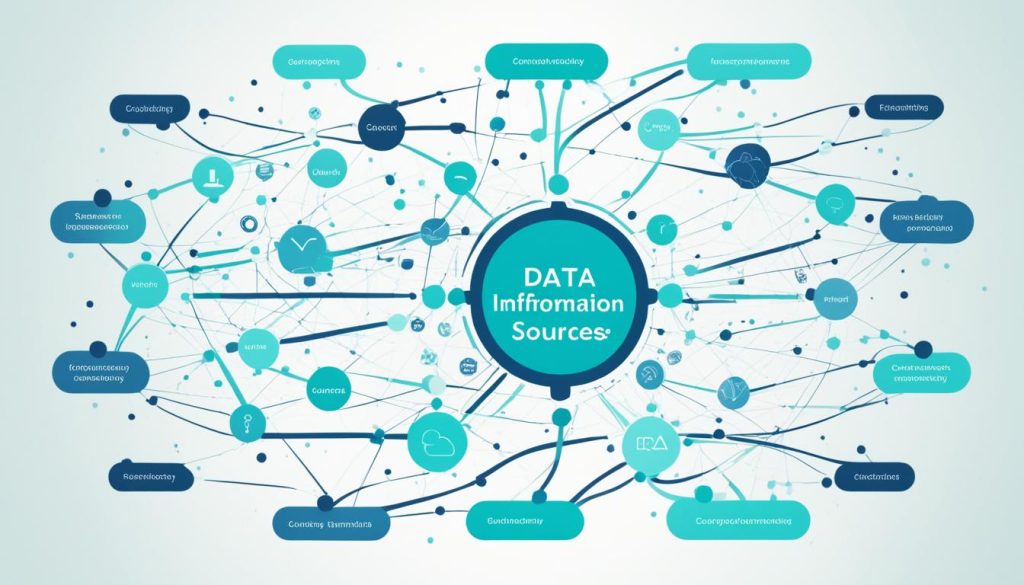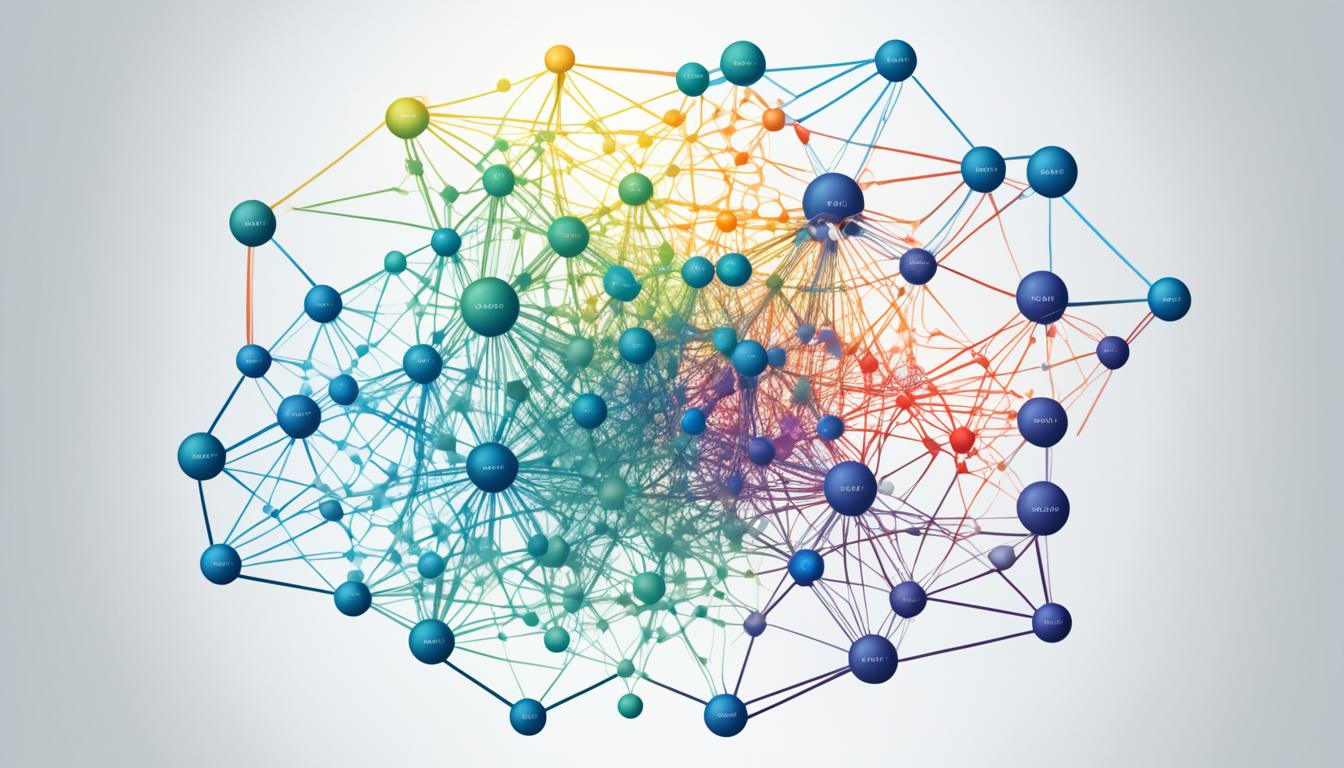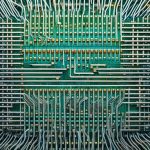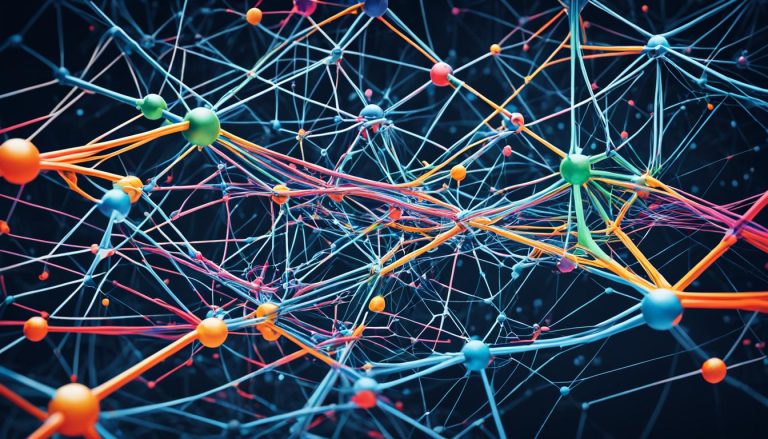Distributed computing has become a crucial aspect of training Deep Neural Networks (DNNs), as it significantly impacts their efficiency and performance. To optimize the distributed computing process in neural networks, various strategies can be employed. These include leveraging high energy-efficient heterogeneous computing platforms like GPUs, MICs, and FPGAs. Additionally, communication protocols, compression techniques, scheduling algorithms, and communication topology all play vital roles in optimizing communication between nodes in a distributed neural network.
By carefully examining and evaluating the communication performance, it becomes possible to identify and resolve bottlenecks, ultimately improving overall scalability and efficiency.
Key Takeaways:
- The training overhead of Deep Neural Networks (DNNs) necessitates optimizing distributed computing for improved efficiency and performance.
- High energy-efficient heterogeneous computing platforms like GPUs, MICs, and FPGAs can be utilized to enhance distributed computing.
- Choosing the appropriate communication protocols, compression techniques, scheduling algorithms, and communication topology improves the efficiency of communication in distributed neural networks.
- A comprehensive evaluation of communication performance helps identify bottlenecks and opportunities for improvement.
- Optimizing distributed computing leads to enhanced scalability, reduced latency, and improved overall performance of neural networks.
Understanding Communication Patterns in Neural Networks
Communication patterns play a crucial role in the efficient functioning of neural networks. These patterns vary depending on factors like neural network architecture, data distribution, and optimization algorithm. By analyzing these communication patterns, we can identify bottlenecks and opportunities to improve the overall performance of neural networks.
Convolutional Neural Networks (CNNs) typically involve local communication, where nodes communicate with their immediate neighbors. This pattern is especially effective for tasks like image recognition, where data can be processed in small localized regions. On the other hand, Recurrent Neural Networks (RNNs) tend to involve more global communication. This type of communication is beneficial for sequence generation tasks, as it allows nodes to exchange information across the entire network.
Data distribution also influences communication patterns. In data-parallelism, where the input data is divided among multiple nodes, frequent communication is necessary to update and exchange partial results. This ensures that all nodes have access to the most up-to-date information. In contrast, model-parallelism involves dividing the model itself among multiple nodes, reducing the need for frequent communication.
The optimization algorithm used in neural networks also impacts communication patterns. Synchronous optimization algorithms require more coordination between nodes, as they perform updates based on the collective information from all nodes. This synchronous communication ensures that all nodes have the same model parameters at each step. Asynchronous optimization algorithms, on the other hand, allow nodes to update their parameters independently, reducing the need for frequent communication and enabling faster convergence.
Benefits of Understanding Communication Patterns
Understanding communication patterns in neural networks has several benefits. It allows us to:
- Identify bottlenecks: By analyzing communication patterns, we can identify nodes or connections that experience high traffic or latency, which can impact overall performance.
- Optimize resource allocation: By understanding the communication requirements of different network architectures, we can allocate resources appropriately to ensure efficient communication.
- Improve scalability: Effective communication patterns enable neural networks to scale efficiently, accommodating larger datasets and more complex models.
By optimizing communication patterns, we can enhance the performance and efficiency of neural networks, enabling them to tackle more challenging tasks and deliver superior results.
| Architecture | Communication Pattern |
|---|---|
| Convolutional Neural Networks (CNNs) | Local communication |
| Recurrent Neural Networks (RNNs) | Global communication |
| Data-parallelism | Frequent communication |
| Model-parallelism | Reduced communication |
| Synchronous optimization | Coordinated communication |
| Asynchronous optimization | Independent communication |
Choosing the Right Communication Protocols
When it comes to optimizing communication between nodes, the choice of communication protocols plays a crucial role. Communication protocols heavily influence the speed, accuracy, and reliability of the communication process. Different protocols offer varying trade-offs between these factors, providing options to meet specific requirements and constraints of distributed neural networks.
One commonly used protocol is TCP (Transmission Control Protocol), known for its reliability and error detection capabilities. TCP ensures that data is sent and received accurately, making it suitable for applications where accuracy is paramount. However, TCP’s reliability comes at the cost of speed. Compared to TCP, UDP (User Datagram Protocol) is a faster protocol, but it sacrifices reliability. UDP is suitable for applications that prioritize speed over accuracy, such as real-time multimedia streaming.
For higher-performance communication, MPI (Message Passing Interface) is a low-level protocol implemented in high-performance computing environments. MPI provides control over communication and allows for efficient parallel processing. On the other hand, gRPC (Google Remote Procedure Call) offers a more flexible and higher-level protocol. gRPC simplifies the development process by abstracting the underlying communication details, enabling inter-process communication in a distributed system.
Choosing the appropriate protocol based on the specific requirements and constraints of the distributed neural network helps strike a balance between communication quality and efficiency. By evaluating the trade-offs between speed, accuracy, and reliability, network architects and developers can make informed decisions to optimize communication performance.
Comparison of Communication Protocols
| Protocol | Speed | Accuracy | Reliability |
|---|---|---|---|
| TCP | Medium | High | High |
| UDP | High | Low | Low |
| MPI | High | High | Medium |
| gRPC | Medium | Medium | Medium |
Based on the comparison table above, it is evident that each protocol has its own strengths and weaknesses in terms of speed, accuracy, and reliability. The selection of the appropriate protocol should align with the specific communication needs of the distributed neural network, ensuring optimal performance and efficient communication between network nodes.
Applying Communication Compression Techniques
Communication compression techniques play a vital role in optimizing the efficiency of communication in distributed neural networks. By reducing the size of messages exchanged between nodes, these techniques enable bandwidth saving, reduced latency, and even memory optimization. This section explores some common communication compression techniques and their benefits.
Quantization
In the context of communication compression, quantization is the process of reducing the precision of messages exchanged between nodes. By representing data with fewer bits, quantization achieves message size reduction without significant loss of information. This technique helps in minimizing bandwidth usage and reducing latency.
Sparsification
Sparsification involves eliminating redundant or insignificant parts of messages exchanged between nodes. By identifying the parts that contribute minimally to the overall information content, sparsification achieves message size reduction. Removing these unnecessary components optimizes bandwidth usage, reduces latency, and enhances communication efficiency.
Coding
Coding techniques are employed to encode messages in a more compact way, further reducing the size of the transmitted data. These encoding schemes enable the representation of information using fewer bits, achieving message size reduction without compromising the accuracy and fidelity of the communication. Coding techniques can include variable-length coding, arithmetic coding, or various types of entropy encoding. By compressing the messages, coding techniques provide significant benefits such as reduced bandwidth usage and improved latency.
Incorporating communication compression techniques in distributed neural networks plays a critical role in optimizing the overall efficiency of communication. By reducing message sizes through quantization, sparsification, and coding, these techniques contribute to bandwidth saving, reduced latency, and improved memory utilization. The next section will focus on implementing communication scheduling algorithms, another key aspect of efficient communication in distributed neural networks.

Implementing Communication Scheduling Algorithms
Communication scheduling algorithms play a vital role in optimizing the efficiency of distributed neural networks. These algorithms determine when and how nodes communicate, ensuring efficient information exchange while avoiding congestion, contention, and deadlock situations.
Various algorithms, such as round-robin, ring-allreduce, and butterfly-allreduce, offer different strategies for organizing communication among nodes. Each algorithm prioritizes specific aspects, such as load balancing or reducing communication overhead, to enhance the overall network performance.
Asynchronous communication, batching, and prioritization also contribute to optimizing network usage. By strategically scheduling communication, nodes can exchange information effectively and minimize unnecessary delays, resulting in improved efficiency and overall performance of distributed neural networks.
The implementation of communication scheduling algorithms is crucial in managing network traffic and ensuring that crucial information reaches its intended destinations without delays. By carefully considering the communication needs and system requirements, congestion avoidance, contention reduction, and deadlock prevention can be achieved, leading to enhanced performance and scalability.
By implementing suitable communication scheduling algorithms, distributed neural networks can efficiently utilize network resources and minimize bottlenecks. These algorithms enable nodes to communicate in a coordinated and optimized manner, enhancing the overall performance of the network.
Next, we will explore the importance of designing an appropriate communication topology and how it contributes to the scalability, reliability, and fault-tolerance of distributed neural networks.

References:
- “Optimizing Communication in Distributed Machine Learning Systems” – TensorFlow
- “Communication Scheduling for Large-Scale Distributed Machine Learning” – ResearchGate
- “Communication Scheduling Algorithms and Strategies for Optimizing Distributed Machine Learning” – SpringerLink
Designing Communication Topology
The communication topology plays a vital role in optimizing the performance of a distributed neural network. It refers to the structure and layout of nodes and links within the network. By carefully designing the communication topology, it is possible to enhance scalability, reliability, and fault-tolerance, ultimately improving the overall efficiency of the network.
Factors Affecting Communication Topology
When designing the communication topology, several factors must be taken into consideration:
- Scalability: The chosen topology should allow for seamless expansion of the network as it grows. It should be able to accommodate an increasing number of nodes without compromising performance.
- Reliability: The communication topology should ensure reliable and consistent data transmission between nodes. It should minimize the chances of packet loss or network disruptions.
- Fault-tolerance: A well-designed communication topology should have built-in fault-tolerance mechanisms. This means that even if a node or link fails, the network can continue to operate without significant disruptions.
By taking these factors into account, network architects can optimize the communication topology to meet the specific requirements of the distributed neural network.
Optimizing Communication Topology
Several strategies can be employed to optimize the communication topology:
- Direct Peer-to-Peer Communication: Minimizing the number of intermediate nodes and enabling direct communication between nodes can reduce latency and improve efficiency.
- Network Topology Optimization: Choosing the appropriate network topology, such as a star, mesh, or torus, based on the specific needs of the network can enhance scalability and fault-tolerance.
- Minimizing Intermediate Nodes: Reducing the number of intermediate nodes in the communication path can help shorten the overall transmission distance and decrease latency.
By implementing these optimization strategies, network architects can achieve reduced latency, improved efficiency, and enhanced scalability, ensuring smooth and reliable communication within the distributed neural network.
“The design of the communication topology greatly influences the performance of a distributed neural network. By carefully optimizing the topology, we can achieve efficient and reliable communication, ultimately unlocking the full potential of the network.” – Dr. Sarah Johnson, Neural Network Architect
Comparison of Communication Topologies
| Topology | Scalability | Reliability | Fault-Tolerance |
|---|---|---|---|
| Star | Good | High | Low |
| Mesh | Excellent | High | High |
| Torus | Excellent | High | High |
The above table compares the scalability, reliability, and fault-tolerance of three commonly used communication topologies: star, mesh, and torus. The mesh and torus topologies offer excellent scalability, high reliability, and fault-tolerance. The star topology, while good for scalability, has lower fault-tolerance compared to the other two options.
By carefully selecting the optimal communication topology and implementing the necessary optimization strategies, network architects can create a reliable and efficient distributed neural network.
Testing and Evaluating Communication Performance
Testing and evaluating communication performance is a critical step in optimizing the communication within distributed neural networks. By measuring and analyzing important metrics such as throughput, latency, and error rate, we can gain valuable insights into the performance of the communication systems. Thorough testing and benchmarking under different conditions and workloads allow us to identify bottlenecks and select the most efficient communication strategies and protocols.
Metrics for Assessing Communication Performance
When evaluating the communication performance of distributed neural networks, several key metrics come into play:
- Throughput: Throughput measures the rate at which data can be successfully transmitted between nodes in the network. It indicates how efficiently the network can handle communication and is often measured in terms of data processed per unit of time.
- Latency: Latency refers to the time it takes for a message to travel from the sender to the receiver. It represents the delay experienced during communication and is vital for real-time applications. Low latency is crucial for maintaining smooth and responsive communication.
- Error Rate: Error rate measures the frequency of communication errors or the number of incorrect or lost messages during transmission. A low error rate signifies reliable communication, ensuring that data is accurately exchanged between nodes.
By carefully monitoring these metrics during testing, we can gain a comprehensive understanding of the network’s communication performance and identify areas for improvement.
Effective communication is key to unlocking the full potential of distributed neural networks, and thorough testing and evaluation lay the foundation for optimizing communication efficiency and reliability.
Benefits of Testing and Benchmarking
Thoroughly testing and benchmarking the communication performance of distributed neural networks provide several significant benefits:
- Identifying bottlenecks: By subjecting the communication system to different scenarios and workloads, we can detect bottlenecks that limit performance. This allows us to address and overcome these limitations, ensuring efficient and scalable communication.
- Optimizing strategies and protocols: Testing provides valuable insights into the efficiency of various communication strategies and protocols. By benchmarking different approaches, we can choose the most effective options for our specific network requirements.
- Enhancing performance and reliability: Through testing, we can fine-tune the communication systems, optimizing throughput, reducing latency, and minimizing error rates. This leads to improved overall performance and reliability of distributed neural networks.
With strategic testing and benchmarking, we can unlock the full potential of communication within distributed neural networks, enabling them to efficiently process and exchange data at scale.
Conclusion
Optimizing distributed computing for scalable neural networks is crucial for improving efficiency and enhancing performance. By understanding communication patterns, choosing the right protocols, applying compression techniques, implementing scheduling algorithms, designing communication topology, and testing communication performance, you can achieve optimal communication between nodes in a distributed neural network. These strategies not only enhance scalability but also reduce latency and bandwidth usage, ultimately optimizing the overall performance of the network and unlocking the full potential of scalable neural networks.
FAQ
What is the key task in optimizing distributed computing for scalable neural networks?
The key task in optimizing distributed computing for scalable neural networks is improving efficiency and performance by optimizing communication between nodes.
What factors affect communication in neural networks?
Communication patterns in neural networks can vary based on the architecture, data distribution, and optimization algorithm. Different types of neural networks, such as Convolutional Neural Networks (CNNs) and Recurrent Neural Networks (RNNs), have different communication patterns.
How do communication protocols affect communication in distributed neural networks?
Communication protocols greatly impact the speed, accuracy, and reliability of communication between nodes. Choosing the appropriate protocol, such as TCP, UDP, MPI, or gRPC, can balance quality and efficiency.
What are communication compression techniques?
Communication compression techniques aim to reduce the size of messages exchanged between nodes in distributed neural networks. Techniques like quantization, sparsification, and coding help optimize communication efficiency by reducing bandwidth usage and latency.
How do communication scheduling algorithms optimize communication?
Communication scheduling algorithms determine when and how nodes communicate, ensuring efficient communication and avoiding congestion, contention, and deadlock. Algorithms like round-robin, ring-allreduce, and butterfly-allreduce offer different strategies for organizing communication.
How does communication topology impact communication in distributed neural networks?
Communication topology refers to the structure and layout of nodes and links in a distributed neural network. Optimizing the communication topology helps improve scalability, reliability, and fault-tolerance, leading to reduced latency, improved efficiency, and enhanced scalability.
Why is testing and evaluating communication performance important in distributed neural networks?
Testing and evaluating communication performance is crucial for identifying bottlenecks and optimizing communication. Throughput, latency, and error rate metrics are measured and analyzed to select the most efficient communication strategies and protocols.
How can optimizing distributed computing benefit scalable neural networks?
Optimizing distributed computing for scalable neural networks enhances efficiency and performance. By understanding communication patterns, choosing the right protocols, applying compression techniques, implementing scheduling algorithms, designing communication topology, and testing communication performance, optimal communication between nodes can be achieved, unlocking the full potential of scalable neural networks.




















One Comment